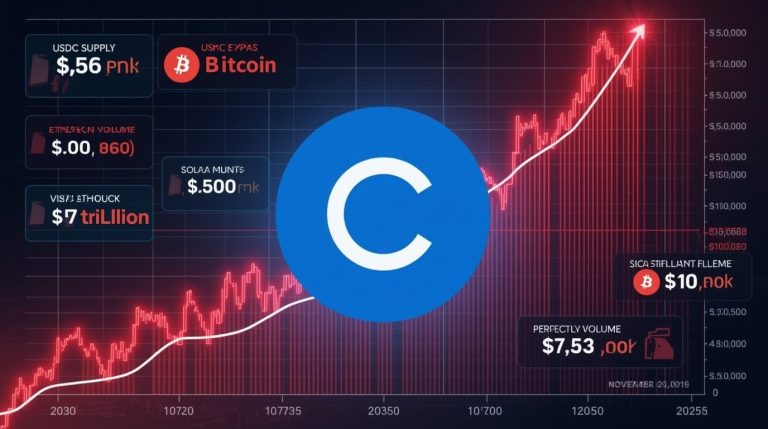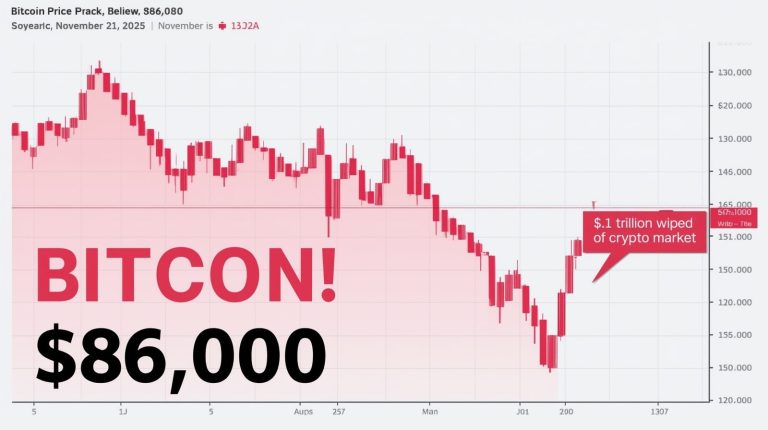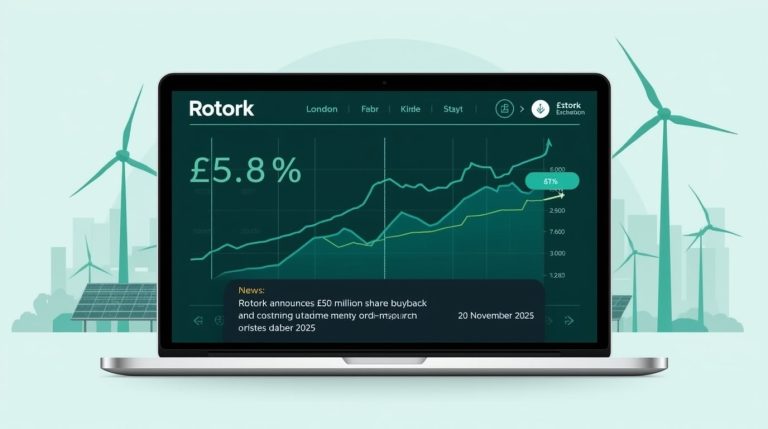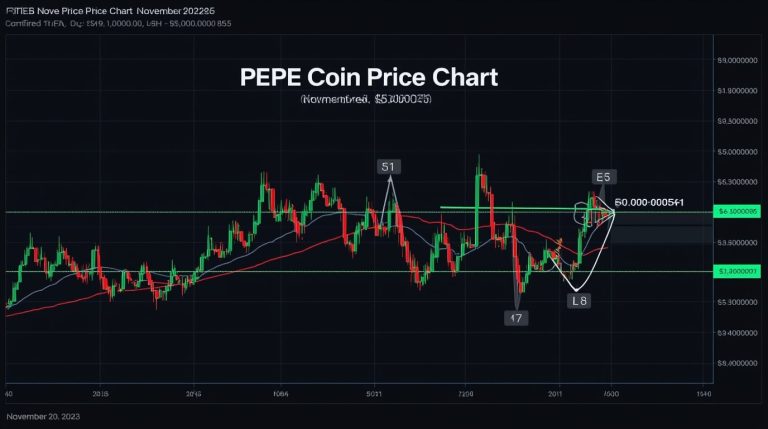In an incredible show of fortitude, Monero has shot up 8.2% to $365 on November 21, 2025, defying the brutal selling spree that has wiped a dismal 1.5 trillion of the cryptocurrency market.
Bitcoin falls to under $86,000 and Ethereum falls below 2,800, but the privacy-focused currency, XMR, appears to be the only true performer, gaining the most in a day in three months and continuing a 126% insurgence since November 2024.
The volume increased 65% to $203 million, and on-chain analytics showed a whale frenzy, in which more than 15,000 XMR were amassed by large holders in the last 24 hours alone.
This rebellion is in a world where global surveillance has become a major concern, and Monero will become the final safe haven against a more transparent digital economy. As the Crypto Fear and Greed Index of the wider market falls to 10, the Relative Strength Index of XMR rises to 68, which is an indication of the gathering strength amidst the storm.
The rise of Monero can be traced back to the rounding bottom in the beginning of November that analysts identified to be a bullish reversal following rejection in May that pushed prices to fall to their current level of $233. Accumulation has since steadily built up again at $340, and today $355 broke out as a result of which the short liquidations with a value of 12 million have been triggered on platforms such as Binance and Kraken.
Privacy tokens as an industry are doing well, with Zcash and Dash increasing by 6% and 4% respectively, but Monero is most successful due to its ironclad anonymity, i.e. ring signatures, stealth addresses, and RingCT that make transactions completely impossible to trace. With the growing number of data breaches and regulatory overkill, the use of XMR in secret business is attracting marginalised capital to nervous investors, leaving unstable majors.
Fluorine Fermi Upgrade Bolsters Defences: Monero Fortifies Against Spy Nodes and Quantum Shadows
The technical leadership of Monero improved further in October, as the Fluorine Fermi hard fork was released, introducing CLI version 0.18.4.3 to the network, improving the peer selection algorithms and protecting users against pervasive spy nodes that undermine the network.
It is one of the key updates of the 2025 development roadmap that increases resistance to selective transaction tracing by 40% so even advanced adversaries cannot deanonymize flows. Developers heralded it as a privacy multiplier, especially at a time when the U.S.-China tariff war has intensified and caused concerns about cyber-espionage, with the use of state-backed node probes surging 25% in Q4.
In the future, the future FCMP++ protocol in 2026 is expected to offer quantum-resistant cryptography to overcome elliptic curve vulnerabilities, which in the future would attack the older wallets. The 0.6 XMR/block tail emission model used by Monero makes it even more ingrained into its scarcity narrative, where a total of more than 18.4 million coins are already in circulation.
These innovations are still underwritten by community-funded projects such as a $925,000 war chest fundraised earlier this year, a point that further drives the ethos of decentralisation of the project. Monero is constructing obfuscation walls, as one of its key advocates stressed, in a world of glass ledgers, and the current price movement has confirmed to the market the importance of fortitude.
Mining Drama Eases: Qubic’s 51% Grip Loosens as P2Pool Reclaims 45% Hashrate Share
The spectre of centralisation that had plagued Monero in August faded today, as the dominance of Qubic Pool, which had reached a high of 51% of hashrate through the use of strong incentives of up to 7000 dollars a day, dropped to 38% after protocol amendments and a movement of miners.
The decentralised variant, P2Pool, took over the leading share to 45% and levelled the playing field and extinguished the fear of orphaned blocks or chain reorganisations, which caused Kraken to freeze XMR deposits in the short term.
Community incentives and RandomX algorithm optimisation have led to this change, which has made the network security stable with average block times remaining consistent at 2 minutes.
It is observed by on-chain sleuths that the number of attempts at solo mining increased by 12% after its adjustment, which indicates a resurgence of confidence in hardware operators. The reinstitution of full trading pairs by exchanges such as KuCoin or Gate.io unlocked 45 million dollars of stagnant liquidity.
Although Qubic did not succeed in raising awareness, its campaign, headed by the co-founder of IOTA, Sergey Ivancheglo, did highlight vulnerabilities and served to boost the pace at which the ASIC-resistant tweaks are adopted. The hashrate currently remains at 3.2 GH/s, 18% higher than the previous month as GPU miners return in the hope that XMR will act like a post-halving, similar to its special emission curve.
Institutional Whispers and Circular Economy Push: New Hampshire Leads Monero Adoption Charge
Online traction is provided by the booming New Hampshire Monero circular economy with local business establishments, such as coffee shops and hardware stores, currently integrating with XMR through point-of-sale integrations, handling close to 2.5 million in monthly transactions.
The crypto division of the Free State Project introduced a $500,000 grant fund to privacy-conscious startups and received 47 applications to incorporate Monero into anonymity technologies in their supply chain. This grassroots surge is in line with world trends: Trusphere November platform expansion also features XMR-native scam reporting, and Soverium quantum-resistant launch is also a nod to the Monero heritage.
Wholesomely, rumours of over-the-counter desks by companies such as Cumberland injecting XMR liquidity pools have swirled, which could inject up to $100million in the next quarter.
With larger Bitcoin ETF withdrawals in general, privacy coins such as Monero have avoided the delisting filing exodus; some of their counterparts have fallen victim to AML regulation, not due to non-security status as Monero does under emerging SEC regulations. According to Chainalysis, Latin American remittances through the Monero corridors reached a high of 150 million every month because the users bypassable fiat rails.
Price Forecasts Bullish: $480 Spike or Retaliation to $340? Analysts Divided on the Future of XMR
Monero predictions are varying but more positive towards the end of November. According to the Cryptopolitan and Changelly, bullish models predict a sprint to a price of 480 driven by the rounding bottom confirmation, and privacy rotation, with an end-of-year price of 756, with regulatory clarity of anonymous assets expected in 2026.
WalletInvestor predicts a growth of $500 by Q1 2026, based on an average 7.2-year historical growth in November and an increase in dark pool demand. This is facilitated by technicals: technical support at the 50-day moving average of $352 is strong, and MACD histograms have turned positive since October was the last time.
Sceptics do warn of a macro-induced de-peak to $340 in case the death cross in Bitcoin pulls the alts down. CoinEdition cautions that it reaches an impetus halting point at $400, and Elliott Wave theory notes that the corrective wave will precede the subsequent impulse.
Risks of mining exist, albeit reduced, and quantum FUD may be used to limit upside without the delivery of FCMP+. Nevertheless, 126% YTD returns are better than those of Bitcoin (45%), and XMR has a positive risk-reward skew in contrarian terms.
Price Forecasts Bullish: $480 Peak or Pullback to $340? Analysts Split on XMR’s Next Move
The ecosystem of Monero is not even within the storm. The market volumes of darknet markets, an important XMR application, have increased by 9% whilst the TVL of DeFi privacy wrappers, such as Tornado Cash forks, has grown by 15% even as the crypto has been in decline.
Others, such as Zcash, are also lagging behind with shielded adoption at 22%, which highlights the advantage Monero has in default anonymity. Regulatory tail winds: MiCA carve-outs of non-custodial privacy tools by the EU have the potential to open $50 billion of institutional flows by 2027.
Still, it has not been a breeze: in high-compliance jurisdictions such as Japan, exchange bans restrict availability, and the debate on scalability is aflame preceding Seraphis upgrades. The two-sided nature of community aggression in forums, which drives innovation, leads to the scaring away of new people.
With the daylight of November 21 having passed, Monero is still holding on to $365, a go-it-alone upsurge amidst the ocean of red. To privacy absolutists, this is no speculation, but sovereignty coded. Crypto’s greatest unravelling: XMR mumbles an undying mantra, real value lies in the shadows.











 Bitcoin
Bitcoin  Ethereum
Ethereum  Tether
Tether  XRP
XRP  Wrapped SOL
Wrapped SOL  USDC
USDC  Lido Staked Ether
Lido Staked Ether  TRON
TRON  Cardano
Cardano  Avalanche
Avalanche  Toncoin
Toncoin